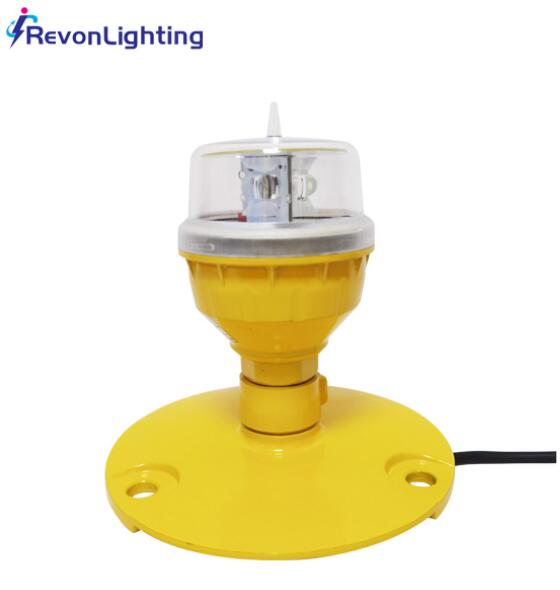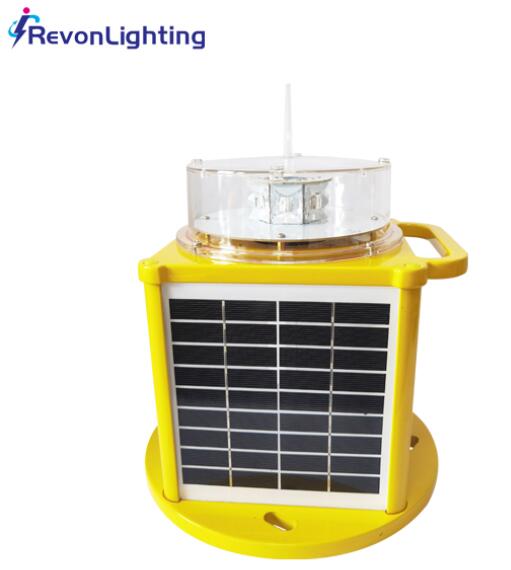Aviation safety is a critical concern for all stakeholders involved in the operation of helicopters. Among the numerous safety measures, proper lighting of helipads plays a significant role in ensuring that helicopters can land and take off safely, especially under low-light conditions or adverse weather. Solar helipad lights and LED helipad lights are two key technologies that have revolutionized helipad lighting, offering significant benefits in terms of efficiency, sustainability, and reliability. This article explores the importance, benefits, and technological advancements of solar helipad lights and LED helipad lights.
The Importance of Proper Helipad Lighting
Helipad lighting is essential for several reasons:
Enhanced Visibility: Proper lighting ensures that pilots can clearly see the landing area, which is crucial for safe landings and takeoffs, particularly at night or in poor visibility conditions.

Operational Efficiency: Efficient lighting systems enable quick and safe helicopter operations, which is especially important in emergency situations where every second counts.
Regulatory Compliance: Aviation authorities such as the Federal Aviation Administration (FAA) and the International Civil Aviation Organization (ICAO) have set specific guidelines for helipad lighting to ensure safety and compliance with international standards.
Solar Helipad Lights
Solar helipad lights are an innovative solution that utilizes solar energy to power the lighting system. These lights have several advantages:

Energy Efficiency:
Solar helipad lights harness solar energy during the day and store it in batteries for use at night. This reduces the reliance on conventional power sources and decreases operational costs.
Sustainability:
By utilizing renewable energy, solar helipad lights contribute to environmental sustainability. They reduce carbon footprints and align with global efforts to combat climate change.
Independence from Grid Power:
Solar-powered lights are particularly useful in remote or off-grid locations where access to electricity may be limited. They ensure that the helipad remains operational even during power outages.
Ease of Installation:
Solar helipad lights are relatively easy to install, as they do not require extensive wiring or connection to the electrical grid. This makes them a cost-effective and practical solution for many helipads.
LED Helipad Lights
LED helipad lights represent another major advancement in helipad lighting technology. Light Emitting Diode (LED) technology offers several benefits over traditional lighting systems:
High Efficiency:
LED helipad lights are highly energy-efficient, consuming significantly less power compared to traditional incandescent or halogen lights. This results in lower energy costs and longer operational life.
Long Lifespan:
LEDs have a much longer lifespan than conventional lighting systems, which reduces maintenance costs and the need for frequent replacements.
Brightness and Clarity:
LED lights provide bright and clear illumination, which is essential for the visibility and safety of helicopter operations. Their consistent light output ensures that the landing area is well-lit at all times.
Durability:
LED helipad lights are durable and can withstand harsh weather conditions, making them suitable for outdoor use. Their robustness ensures reliable performance in diverse environmental conditions.
Technological Advancements and Integration
The integration of solar and LED technologies has led to the development of advanced helipad lighting systems that combine the best of both worlds:
Solar-Powered LED Helipad Lights:
These systems use solar panels to charge batteries that power LED lights. This combination maximizes energy efficiency and sustainability while providing bright, reliable illumination.
| solar helipad lights | led helipad lights |
| 890 | 126 |
Smart Lighting Solutions:
Modern helipad lighting systems can include smart features such as remote monitoring and control. These systems allow operators to adjust the lighting intensity and monitor the operational status in real-time, ensuring optimal performance and prompt maintenance.
Adaptive Lighting:
Some advanced systems can adjust the lighting based on ambient conditions. For instance, they can automatically dim the lights during daylight hours and brighten them at night or during poor visibility conditions. This enhances energy efficiency and ensures appropriate lighting levels at all times.
Regulatory Considerations
Compliance with aviation safety regulations is essential for the installation and operation of helipad lighting systems. Authorities such as the FAA and ICAO provide detailed guidelines for helipad lighting to ensure safety and standardization:
FAA Regulations:
The FAA’s Advisory Circular AC 150/5390-2B outlines the requirements for heliport design, including lighting specifications. It provides guidance on the types, placement, and operational standards for helipad lights.
ICAO Standards:
ICAO’s Annex 14 to the Convention on International Civil Aviation sets the international standards for heliport lighting. These standards ensure uniformity in aviation safety measures across member states.
Solar helipad lights and LED helipad lights have revolutionized the field of helipad lighting, offering significant benefits in terms of energy efficiency, sustainability, and reliability. These advancements ensure that helicopters can operate safely and efficiently, even in challenging conditions. By integrating solar and LED technologies, modern helipad lighting systems provide a robust, cost-effective, and environmentally friendly solution that enhances aviation safety.
Compliance with regulatory standards set by aviation authorities is crucial for maintaining safety and avoiding legal liabilities. Investing in high-quality solar helipad lights and LED helipad lights is not just a regulatory requirement but a commitment to safeguarding lives and enhancing the overall safety and efficiency of helicopter operations. As technology continues to evolve, the role of these lighting systems will remain critical in ensuring safe and efficient helicopter operations worldwide.